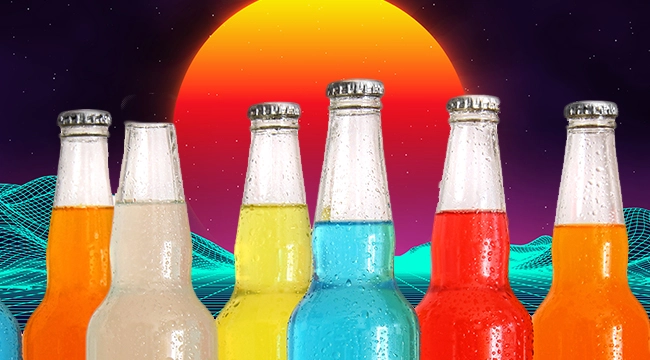A wine cooler is an alcoholic beverage made from wine and fruit juice, which is frequently combined with a carbonated beverage and sugar. It was extremely popular before the 90s and is currently making a comeback. But did you know why they dropped in popularity in the first place?
Wine Coolers lost popularity in the United States after the 1980s because the US excise tax on wine was raised from $0.17 per gallon to $1.07 in 1991. This made it uneconomical for Wine Cooler manufacturers to produce at a palatable price for buyers.
The Start of Wine Coolers
Wine coolers were originally made at home with light white wines like dry Chardonnay, Pinot Grigio, and lemon-lime soda. However, in the early 1980s, they were bottled and commercially sold by some big names like E & J Gallo and Seagram’s.
They were marketed as adult soda pop, containing pulp, artificial fruit flavors, cheap wine, and about as much alcohol as your average craft beer, which was about 4 to 6%.
What could possibly be the allure of such a beverage? Aside from the sessional ABV, one didn’t have to open an entire bottle of Chardonnay to enjoy something lighter.
Not to mention that the easy twist-off cap was a helpful feature in the fast-paced decade. With all of the flavoring, it’s no surprise that wine coolers became a full-fledged phenomenon, especially in an era of sluggish beverage sales.
They were a full-fledged phenomenon. According to the Chicago Tribune, they accounted for nearly 10% of all wine consumption in the United States in 1985! Yes, we are aware. We, too, couldn’t believe it. (Source: Go-Wine)
Killing the Wine Coolers and Reviving it
Everything went wrong with the increase in taxes, taxes, and more taxes. On January 1, 1991, Congress increased the excise tax on wine from $.17/gallon to $1.07/gallon.
This effectively killed wine blending and ushered in the era of the alternative beverage.
Although the world is returning to the 1980s, when it comes to beverages, it has moved on to bigger, better, and tastier things. Right? We’re not convinced.
Wine coolers are cool again, according to The Kitchn. Kanye and Rhianna, how about you?
Actually, it’s not that surprising. Wine coolers had some definitely trendy characteristics now: lower ABV and sweet without being overly sweet. However, keep an eye on the sugar content.
Combine that with a less snobbish drinking culture and greater availability of artisan ingredients. We’ve seen yerba mate and mint flavorings, and maybe companies and mixologists can rebuild the wine cooler and make it better than it was before. (Source: Go-Wine)
Wine Coolers Making a Comeback
With the relaunch of its brand, the company began paying the $1.07 excise tax for the first time in nearly three decades to put the wine back in wine coolers. Of course, Bartles & Jaymes is now canned, as every alcoholic beverage must be in pleasant white cans these days if possible. The cans have a scant 4% ABV and, like hard seltzer, is low-sugar and low-calorie, with only 120 calories, far fewer than in the 1980s.
Most notably, these novel wine coolers are available in flavors that sound suspiciously similar to those offered by hard seltzer brands: ginger and lemon, cucumber and lime, grapefruit and green tea, and watermelon and mint. (Source: Go-Wine)
Image from UPROXX
